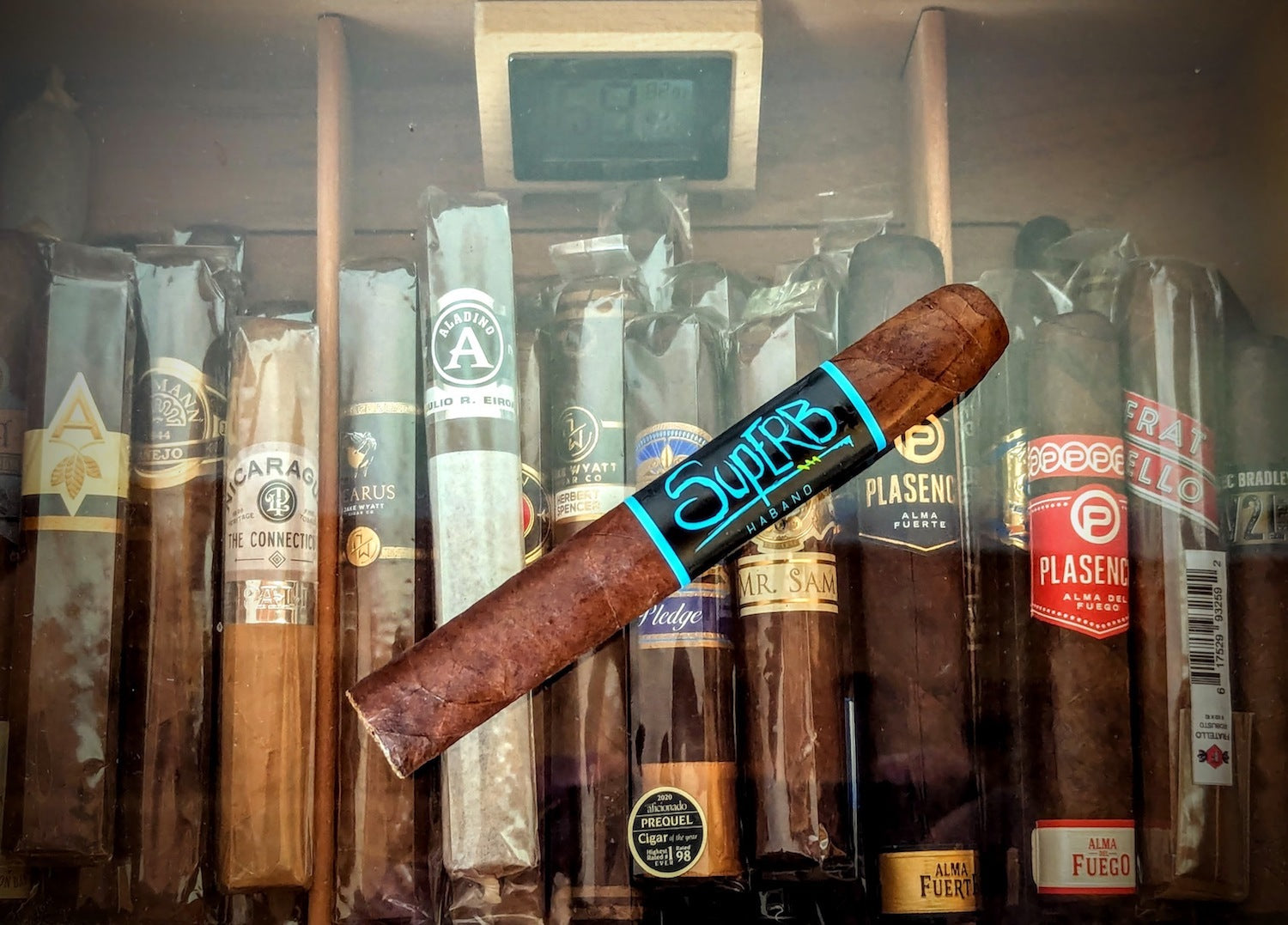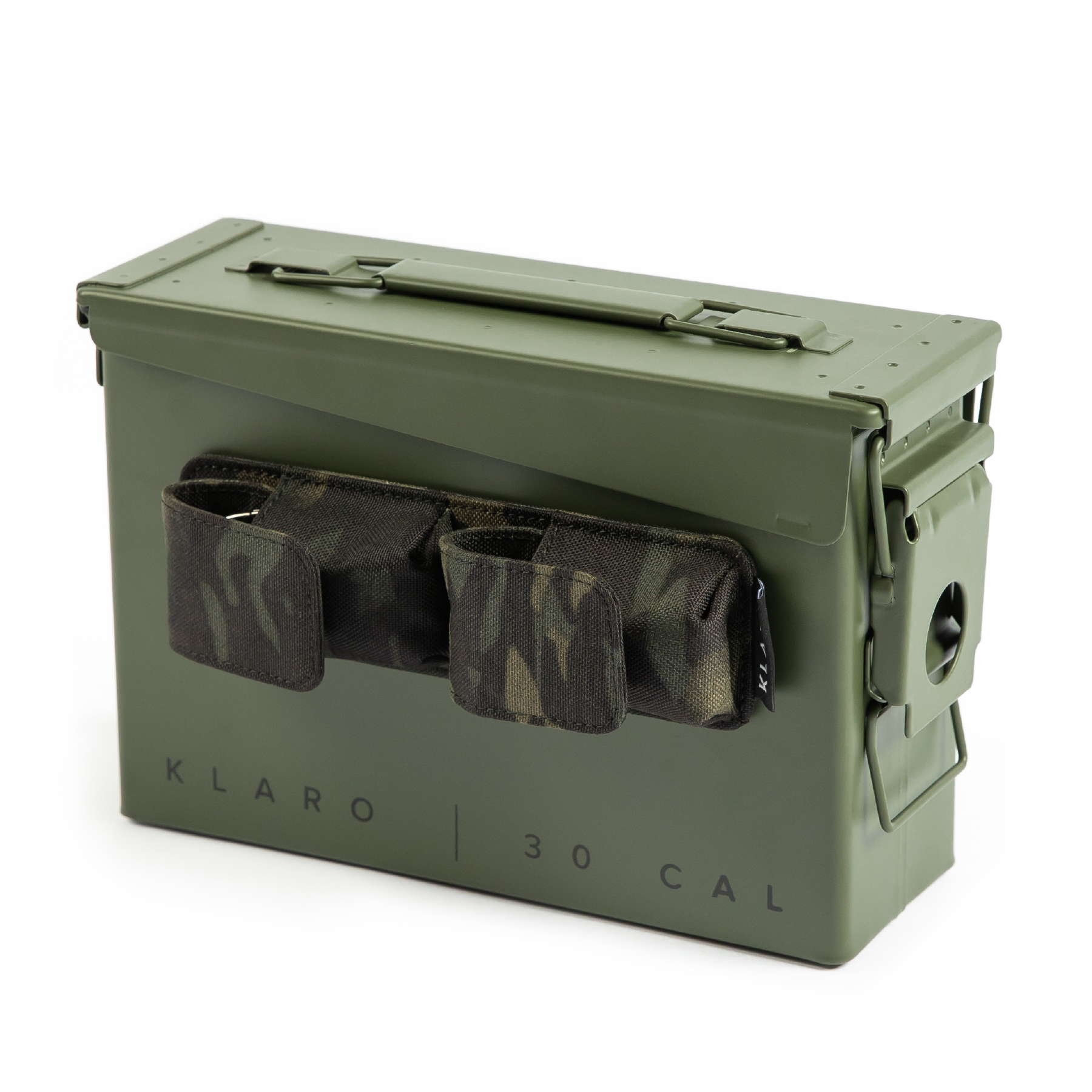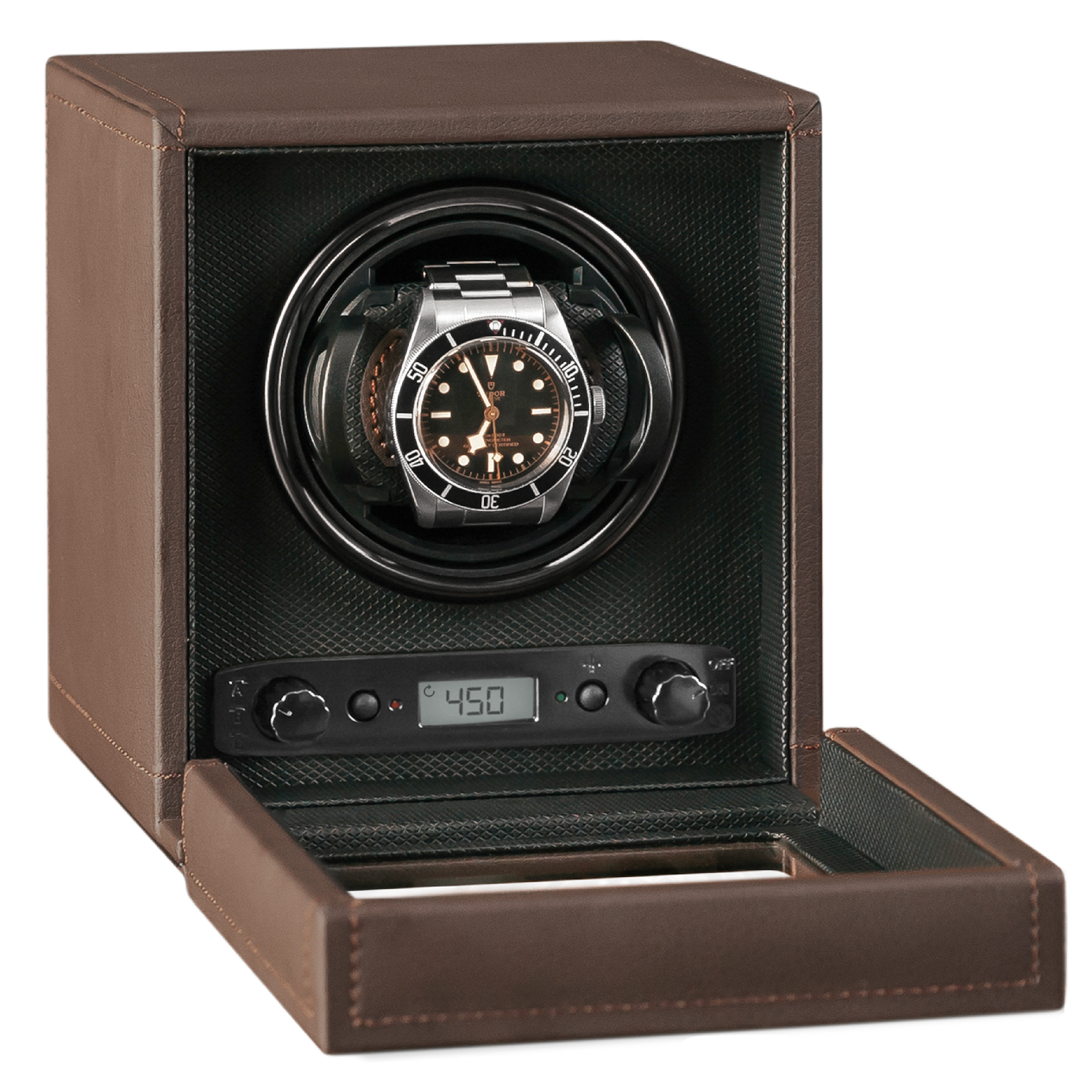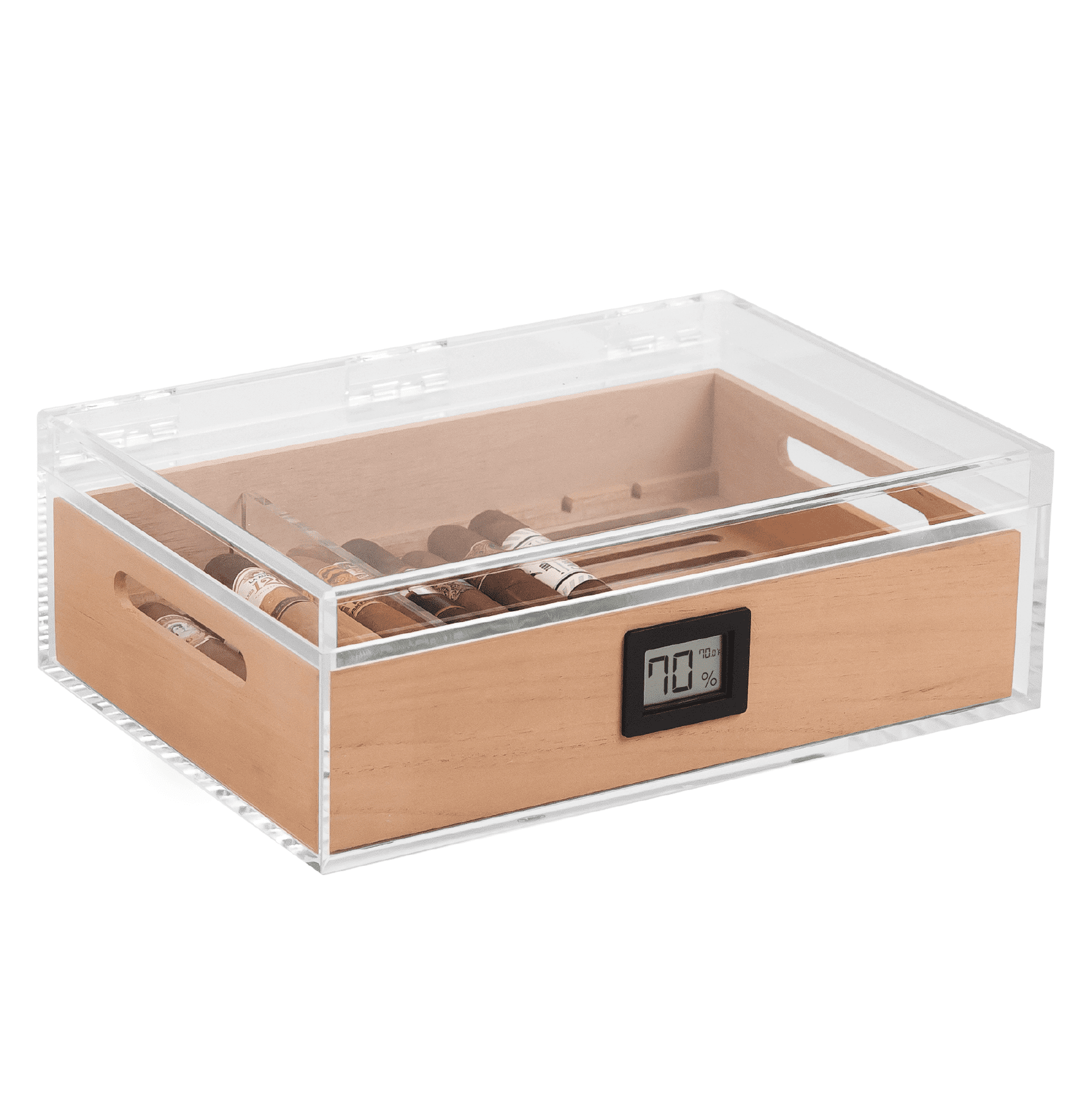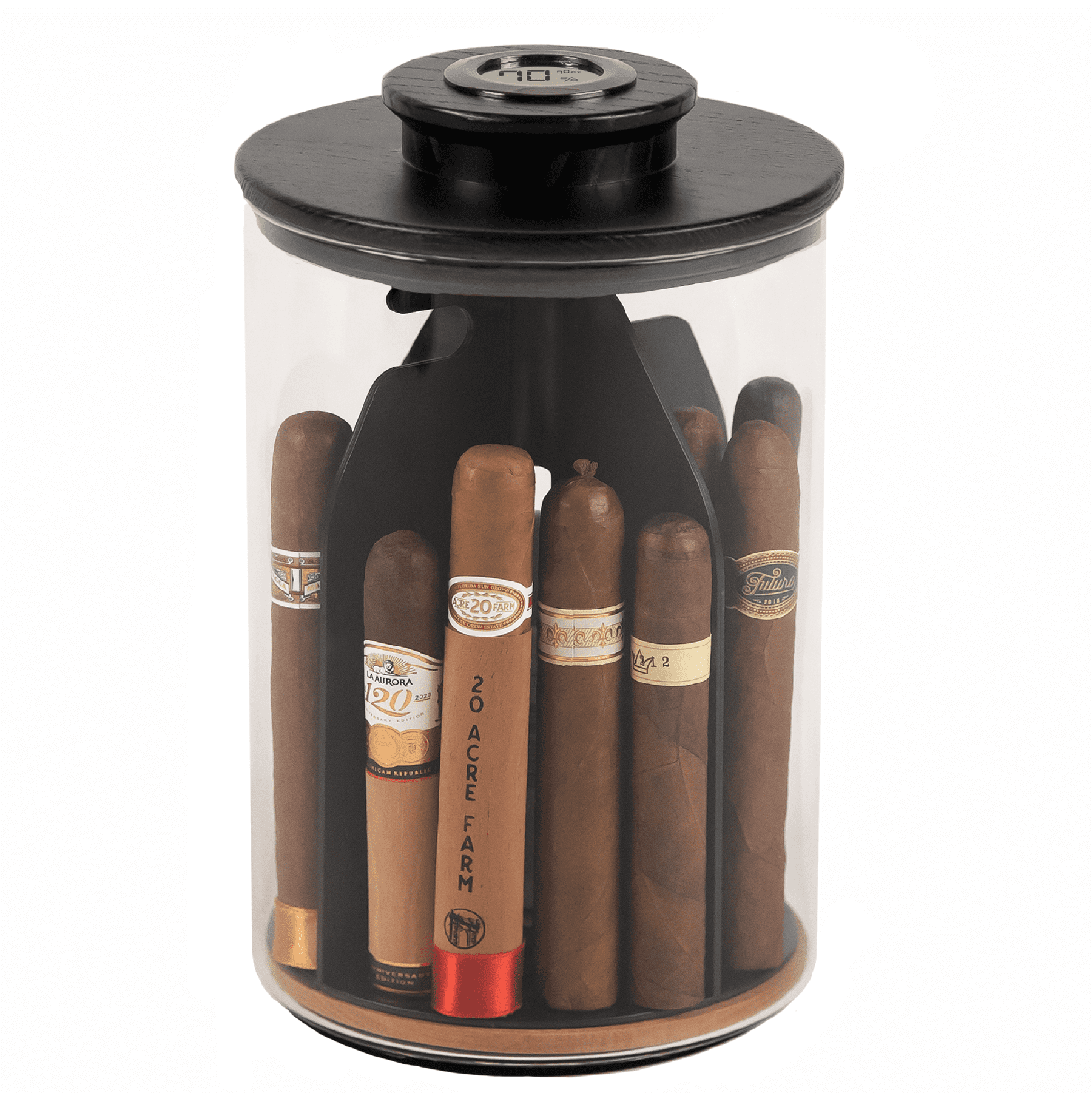Reviving Dry Cigars: Effective Methods Without a Humidor
Finding a cigar in your collection that has dried out is always disappointing. Whether you weren’t paying attention at the cigar shop, something went wrong in the mail, or you let a cigar go dry without storing it correctly, a cigar that shows signs of drying out is not necessarily a lost cause. There are ways of fixing some dry cigars, depending on the damage. It is a reminder of the importance of storing cigars properly.
Cigars dry out when exposed without sufficient humidity. If you aren’t storing your cigars in a humidor, they will likely dry out unless you live in an especially humid environment. Even then, the natural environment is unlikely to produce the ideal long-term ideal conditions for storing cigars. For this, you need a humidor, and that’s our first recommendation—to invest in a good humidor.
Without one? There are ways to bring your cigar back to life. Let’s explore the process of rehydrating cigars without the use of a humidor.
Understanding Cigar Moisture

Cigars should be stored between 68% and 72% humidity. At these levels, you can store cigars for months and sometimes years without worrying about your cigars drying out or becoming too moist. You may destroy cigars if they become too dry or too humid. Learn more about cigar temperature and humidity conditions.
When a cigar is too dry, the leaves become brittle and the wrapper is susceptible to cracking, which likely makes your cigar unsmokeable. Even if the wrapper survives intact, a dry cigar will burn too quickly, is more likely to tunnel or canoe, and can alter the flavors of the tobacco leaves.
So how do you know if your cigars are drying out? Obviously, you don’t want to wait until the wrapper cracks to know if the cigar is too dry. If you store cigars in a humidor, you can check the hygrometer to know the humidor humidity levels, which is a good indication of whether your cigars are too dry or wet. Without a humidor or hygrometer, simply use a pinch test. Place the cigar near your ear and lightly squeeze and spin the cigar. If you hear the cracking of the filler tobacco, it’s likely that your cigar has dried out.
But don’t panic! You’ve caught the problem before it’s destroyed the wrapper. But your next step should be a careful one. First, we’ll cover what not to do.
Emergency Solutions for Reviving Dry Cigars
Cigars are delicate objects. It’s a delicate process to grow the plant, choose the right leaves, ferment the leaves, roll the tobacco, and store the tobacco. Likewise, restoring cigar moisture is a delicate process, one not to rush.
Whenever you hear of quick-fix DIY cigar rehydration methods, proceed with caution. With a lot of caution. Returning cigars to a healthy state is likely a longer process than what these other methods promise. Some incorrect cigar revival methods include:
- Plastic Bag with Water: Putting a cigar in a plastic bag with water can cause it to become overly damp and may also promote mold growth.
- Wrapping in a Wet Towel: Again, too much moisture too quickly can lead to mold growth and an uneven rehydration process.
We’ve heard rumors of microwaving cigars, using a hair dryer, and other means of applying water directly to the cigar. Each carries risk of further damaging the cigar, and we don’t recommend any of these methods. If you want to restore a cigar, it’ll take time to achieve the process more naturally.
Household Items to Use for Rehydration
No humidor? No problem. Well… Possibly.
The best way to rehydrate a cigar is with a humidor. Without one, you may recreate the same humid environment with certain household items. Ziplock bags, Tupperware, bread boxes, or even a wine cooler: These containers may all be used to create a more humid storage environment. But each will need a humidification source, such as a wet sponge, damp paper towel, or thimble of water.
The humidification element should naturally add moisture to the air. The cigar will gradually absorb some of this moisture without damaging the fibers and structure of the cigar. You may still run the risk of oversaturation, so be conservative with the amount of moisture you include with the sponge or paper towel. As we’ll discuss in a later section, the most important thing is to rehydrate your cigars gradually.
The Humidity Pack Solution
There are non-DIY humidifiers you may also use to help restore a dry cigar. The most common of these are humidor packs, also known as humidity packs.
Humidity packs are two-way systems that absorb and release moisture to maintain a desired humidity level. These packs are often sold as percentages—for example, you can purchase a Boved 65% humidity pack. Several brands make humidity packs, with Boveda, Integra Boost, and Humidipacks being some of the most popular.
To use one, simply choose the pack with your desired relative humidity (RH). Unwrap it, and place the pack in the container where you store cigars. Many people incorporate humidity packs into Tupperware to create an improvised humidor. This is a fair short-term solution.
Humidity packs typically last several months, but you will want to use a digital hygrometer to monitor the humidity levels inside your container to know when a new humidity pack is required.
DIY Temporary Humidors

A Tupperware humidor is a great DIY option in a pinch when using a humidity pack to rehydrate your cigars. But you can repurpose other containers to create a DIY temporary humidor. We’ve seen cigar smokers repurpose Ball jars, ammo cases, cigar boxes, Pelican cases, shoe boxes, and all sorts of other containers. Though some of these may serve you temporarily, these are not generally long-term solutions for storing your cigars safely, especially if you live in an environment with frequently changing climates.
For our purposes, you may be able to repurpose these types of containers in an effort to restore a partially dried-out cigar.
Rehydrating Cigars Gradually
The most important rule for rehydrating a cigar is to do so slowly. Add too much moisture too soon, and you risk peeling or warping, saturating the tobacco, or even causing cracks to form. Slow and steady wins for rehydrating cigars.
If using humidity packs, start with a low humidity point, 62%, perhaps. Increase the humidity level gradually over several weeks to ensure a gradual rehydration. Fixing dry cigars requires patience. This process is more easily done with a humidor, but you should be able to achieve similar results by adding different humidity packs.
Alternative Methods for Cigar Rehydration

As mentioned, you might experiment with other types of humidifiers when trying to rehydrate a dry cigar. Yet with any of these other humidification elements, slowness is key. You might include a damp towel in a plastic Tupperware box, but ensure you start out with very little moisture. You might use a sponge with distilled water, but only introduce small amounts of moisture at a time.
Preventing Future Cigar Dryness
We return to the most important question: why did the cigar dry out? Proper storage is essential for managing any cigar collection. A humidor with Spanish cedar that can act as a humidity buffer provides the best long-term protection for cigars. These are reliable systems that often come with hygrometers to help you keep tabs on the humidity levels.
Check out the line of Klaro humidors and learn more about their humidification system that maintains consistent humidity levels for storing cigars.
Summary
In review, identify dry cigars as quickly as possible. Once you’ve discovered a dry stick, you should only attempt to rehydrate it gradually, over the course of several weeks. But if you take a single lesson from this, it is to invest now in smart humidity protection for your cigar collection.



